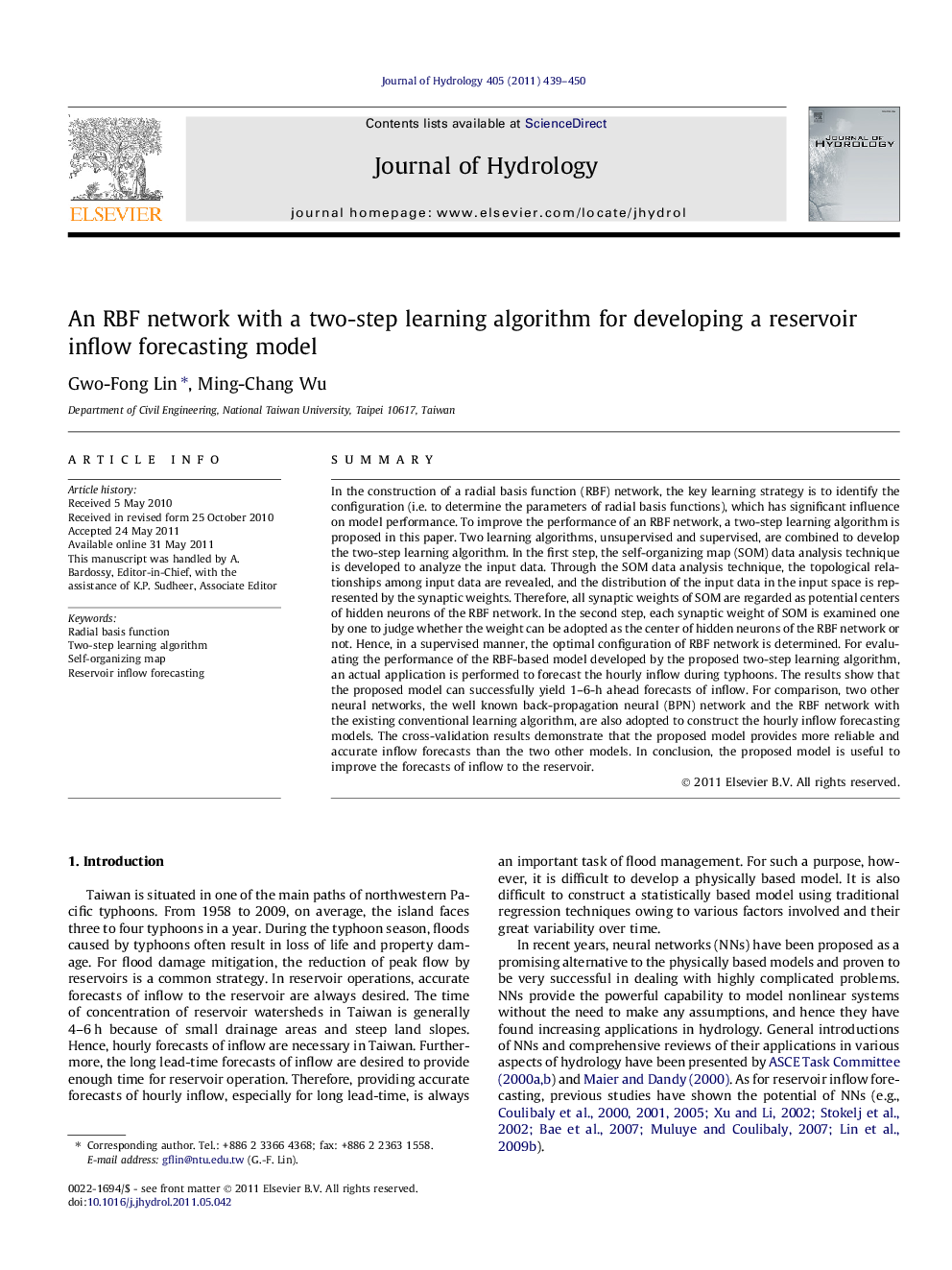| کد مقاله | کد نشریه | سال انتشار | مقاله انگلیسی | نسخه تمام متن |
|---|---|---|---|---|
| 4577411 | 1630017 | 2011 | 12 صفحه PDF | دانلود رایگان |

SummaryIn the construction of a radial basis function (RBF) network, the key learning strategy is to identify the configuration (i.e. to determine the parameters of radial basis functions), which has significant influence on model performance. To improve the performance of an RBF network, a two-step learning algorithm is proposed in this paper. Two learning algorithms, unsupervised and supervised, are combined to develop the two-step learning algorithm. In the first step, the self-organizing map (SOM) data analysis technique is developed to analyze the input data. Through the SOM data analysis technique, the topological relationships among input data are revealed, and the distribution of the input data in the input space is represented by the synaptic weights. Therefore, all synaptic weights of SOM are regarded as potential centers of hidden neurons of the RBF network. In the second step, each synaptic weight of SOM is examined one by one to judge whether the weight can be adopted as the center of hidden neurons of the RBF network or not. Hence, in a supervised manner, the optimal configuration of RBF network is determined. For evaluating the performance of the RBF-based model developed by the proposed two-step learning algorithm, an actual application is performed to forecast the hourly inflow during typhoons. The results show that the proposed model can successfully yield 1–6-h ahead forecasts of inflow. For comparison, two other neural networks, the well known back-propagation neural (BPN) network and the RBF network with the existing conventional learning algorithm, are also adopted to construct the hourly inflow forecasting models. The cross-validation results demonstrate that the proposed model provides more reliable and accurate inflow forecasts than the two other models. In conclusion, the proposed model is useful to improve the forecasts of inflow to the reservoir.
► A new learning algorithm for the RBF network is proposed.
► An actual application is performed to forecast the hourly inflow during typhoons.
► The proposed model provides more reliable and accurate inflow forecasts.
Journal: Journal of Hydrology - Volume 405, Issues 3–4, 5 August 2011, Pages 439–450